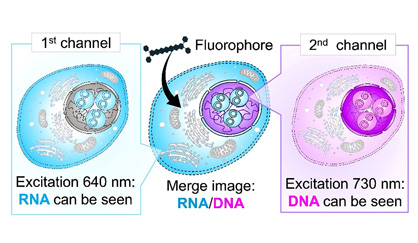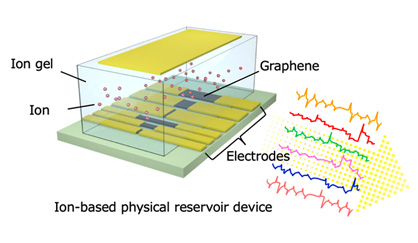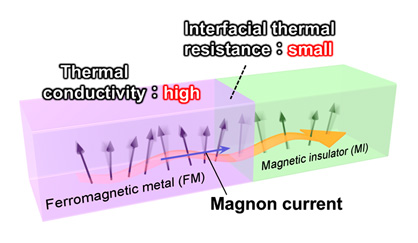World’s First N-Channel Diamond Field-Effect Transistor
—A Step Forward in Developing Diamond CMOS Integrated Circuits—2024.01.25
NIMS (National Institute for Materials Science)
A NIMS research team has developed the world’s first n-channel diamond MOSFET (metal-oxide-semiconductor field-effect transistor).
Abstract
- A NIMS research team has developed the world’s first n-channel diamond MOSFET (metal-oxide-semiconductor field-effect transistor). The developed n-channel diamond MOSFET provides a key step toward CMOS (complementary metal-oxide-semiconductor: one of the most popular technologies in the computer chip) integrated circuits for harsh-environment- applications as well as the development of diamond power electronics.
- Semiconductor diamond has outstanding physical properties such as ultra wide-bandgap energy of 5.5 eV, high carriers mobilities, and high thermal conductivity etc, which is promising for the applications under extreme environmental conditions with high performance and high reliability, such as the environments of high temperatures and high levels of radiation (e.g., in proximity to nuclear reactor cores). By using diamond electronics, not only can the thermal management demand for conventional semiconductors be alleviated but these devices are also more energy efficient and can endure much higher breakdown voltages and harsh environments. On the other hand, with the development of diamond growth technologies, power electronics, spintronics, and microelectromechanical system (MEMS) sensors operatable under high-temperature and strong-radiation conditions, the demand for peripheral circuitry based on diamond CMOS devices has increased for monolithic integration. For the fabrication of CMOS integrated circuits, both p- and n-type channel MOSFETs are required as those required for conventional silicon electronics. However, n-channel diamond MOSFETs had yet to be developed.
- This NIMS research team developed a technique to grow high-quality monocrystalline n-type diamond semiconductors with smooth and flat terraces at the atomic level by doping diamond with a low concentration of phosphorus (diagram on the left in the figure). Using this technique, the team succeeded in fabricating an n-channel diamond MOSFET for the first time in the world. This MOSFET is composed mainly of an n-channel diamond semiconductor layer atop another diamond layer doped with a high concentration of phosphorus (middle diagram in the figure). The use of the latter diamond layer significantly reduced source and drain contact resistance. The team confirmed that the fabricated diamond MOSFET actually functioned as an n-channel transistor. In addition, the team verified the excellent high-temperature performance of the MOSFET as indicated by its field-effect mobility—an important transistor performance indicator—of approximately 150 cm2/V・sec at 300°C (graph on the right in the figure).
- These achievements are expected to facilitate the development of CMOS integrated circuits for the manufacture of energy-efficient power electronics, spintronic devices and (MEMS) sensors under harsh environments.
- This project was carried out by Meiyong Liao (Research Center for Electronic and Optical Materials (RCEOM), NIMS), Huanying Sun (RCEOM, NIMS) and Satoshi Koizumi (RCEOM, NIMS).
- This research was published in Advanced Science, an open access journal, on January 20, 2024 (doi.org/10.1002/advs.202306013).

Figure. World’s First N-Channel Diamond Field-Effect Transistor: (Left) Atomic force microscope image of diamond epilayer surface morphology. (Middle) Optical microscope image of the diamond MOSFET. (Right) Performance of the MOSFET measured at 300°C. The drain current increased when the gate voltage (Vg) was increased from -20 V (indicated by a black line) to 10 V (indicated by a yellow line).
Published Paper
(”High-temperature and high-electron mobility metal-oxide-semiconductor field-effect transistors based on n-type diamond” Meiyong Liao, Huangying Sun, Satoshi Koizumi; Journal: Advanced Science [January 20, 2024]; DOI : 10.1002/advs.202306013)
Contact information
(Regarding this research)
Satoshi Koizumi
Group Leader
Ultra-wide Bandgap Semiconductors Group
Functional Materials Field
Research Center for Electronic and Optical Materials, NIMS
Group Leader
Ultra-wide Bandgap Semiconductors Group
Functional Materials Field
Research Center for Electronic and Optical Materials, NIMS
Email: KOIZUMI.Satoshi=nims.go.jp (Please change "=" to "@")
Meiyong Liao
Chief Researcher
Ultra-wide Bandgap Semiconductors Group
Functional Materials Field
Research Center for Electronic and Optical Materials, NIMS
Chief Researcher
Ultra-wide Bandgap Semiconductors Group
Functional Materials Field
Research Center for Electronic and Optical Materials, NIMS
Email: Meiyong.LIAO=nims.go.jp (Please change "=" to "@")
(General information)
Public Relations Office, NIMS
TEL: +81-29-859-2026
FAX: +81-29-859-2017
E-Mail: pressrelease=ml.nims.go.jp (Please change "=" to "@")
FAX: +81-29-859-2017
E-Mail: pressrelease=ml.nims.go.jp (Please change "=" to "@")



